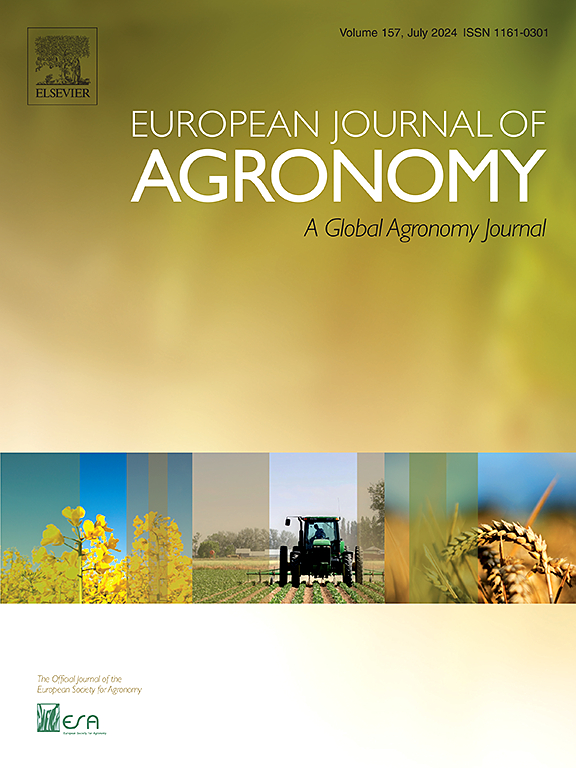Bayesian calibration of management practices for a crop model implemented in a subsistence farming region
IF 4.5
1区 农林科学
Q1 AGRONOMY
引用次数: 0
Abstract
Rainfed agriculture is crucial for food security in sub-Saharan Africa, yet it faces significant challenges from climate variability, soil degradation, and limited access to resources. Process-based crop models are widely used in agricultural research as well as in decision support systems. These systems play an important role in aiding policymakers in designing and implementing strategies to enhance food security. Farm management practices are one essential input for crop models. However, that data exhibit farm-scale variabilities and is usually scarce in regions with fragile food production systems, rendering the powerful crop modeling tools ineffective, particularly in large-scale applications. We present a new approach to infer the relevant management practices of a region in a data scarce environment. We introduce Bayesian calibration as a method to infer key management practices using the CERES-Maize model within DSSAT, in order to provide more reliable yield estimates in a subsistence-farming region. This novel approach allows to better represent the uncertainty in the unknown input management practices in addition to the soil and weather-related variabilities. A study case was presented using farm-level maize yield data from 18 wards in North-western Zimbabwe from the 2021/22 season. The calibrated model provided reliable yield estimates for 72 % of the wards, significantly outperforming the non-calibrated model, which captured the observed yield for only 22 % of the wards. Furthermore, the calibrated model better captured intra-regional yield variation, with an R² of 0.42 and a d-agreement index of 0.67. This approach underscores the importance of accurately representing the variability of management practices in larger-scale implementations of crop models. This approach will allow the crop models to be effectively used for monitoring and forecasting of crop yield for a wide swath of fragile lands with limited data availabilities.
求助全文
约1分钟内获得全文
求助全文
来源期刊

European Journal of Agronomy
农林科学-农艺学
CiteScore
8.30
自引率
7.70%
发文量
187
审稿时长
4.5 months
期刊介绍:
The European Journal of Agronomy, the official journal of the European Society for Agronomy, publishes original research papers reporting experimental and theoretical contributions to field-based agronomy and crop science. The journal will consider research at the field level for agricultural, horticultural and tree crops, that uses comprehensive and explanatory approaches. The EJA covers the following topics:
crop physiology
crop production and management including irrigation, fertilization and soil management
agroclimatology and modelling
plant-soil relationships
crop quality and post-harvest physiology
farming and cropping systems
agroecosystems and the environment
crop-weed interactions and management
organic farming
horticultural crops
papers from the European Society for Agronomy bi-annual meetings
In determining the suitability of submitted articles for publication, particular scrutiny is placed on the degree of novelty and significance of the research and the extent to which it adds to existing knowledge in agronomy.
 求助内容:
求助内容: 应助结果提醒方式:
应助结果提醒方式:


